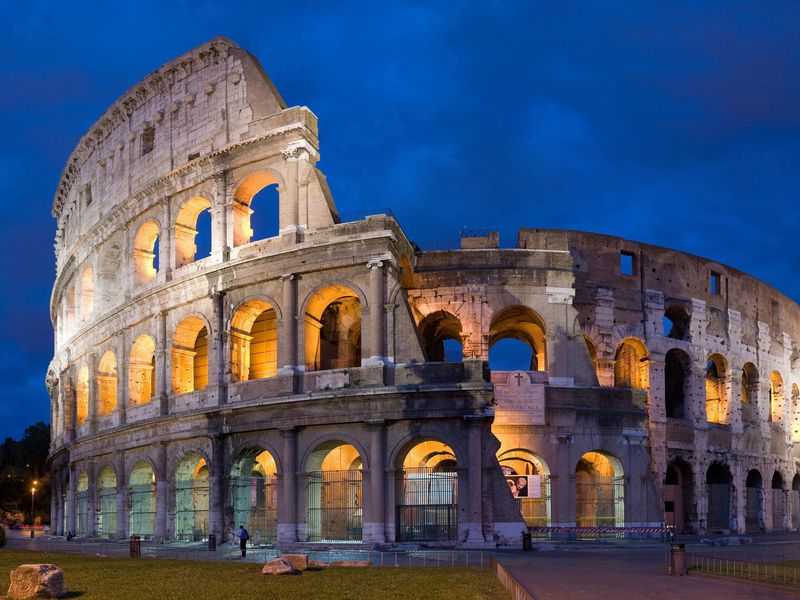Arguably the most iconic arena in the world, Il Colosseo still stands at the very centre of modern Rome as a testament to both the glory and the cruelty of the Roman Empire. Constructed almost two thousand years ago, around six million people still flock to Italy’s capital to explore the history and grandeur of what remains of the largest amphitheatre the world has ever seen.
Despite the majestic architecture and its cutting-edge design, the Colosseum is most well-known for the brutal and bloody spectacles it hosted. Gladiatorial contests, animal hunting, war processions, battle reenactments, plays, and executions all provided the people with entertainment during its five centuries of activity.Four hundred thousand people and one million animals are believed to have died throughout the Colosseum’s lifespan, clearly illustrating the sheer bloody-mindedness of Ancient Rome.

While less discussed, the Colosseum’s significance was actually far more than just as a theatre for mass entertainment; from its design and architecture through to the events it played host to, the amphitheatre served as a tool to Roman Emperors for political control.
Following the suicide of Rome’s fifth emperor Nero in 68 AD, Rome grew deeply fractious, with civil war briefly breaking out and social, military, and political upheaval ensuing. Emerging victorious from this turmoil was Vespasian, founder of the Flavian dynasty, who needed to consolidate his position as emperor with the Empire close to ruin. Seeking inspiration from Rome’s first emperor Augustus who had supposedly planned to build a permanent amphitheatre, Vespasian commissioned the construction of what was to be known as the Flavian amphitheatre:a gift to the Roman people. The goal was panem et circenses(bread and circuses). A means of providing entertainment to the masses to appease public discontent and win over popular support in response to the recent struggle and instability of the Empire.
Rome was indeed hungry for entertainment and distraction, and the Colosseum’s events reflected the various rulers’ desires to win over political capital and strengthen their rule. Victorious battle reenactments served to foster the spirit of Roman imperial prowess, and the courage of gladiators symbolised the might of the Roman warrior. Executions of criminals were incorporated into the theatrical performances, some were catapulted in from outside the arena in a timely manner so as to re-enact deaths in plays. The one hundred days of games put on for the opening of the Colosseum was an unprecedented spectacle in entertainment, and the people of Rome were enraptured.
Underlying the political support won from the construction of and events held was the political significance of the architecture and design of the Colosseum itself. It was no coincidence that the amphitheatre was built upon former emperor Nero’s lake, as it represented a handing back of land to public use following the confiscation of property that occurred under his rule. The key element here though is its sheer scale. To build the largest amphitheatre in the world, an amphitheatre that could house over fifty thousand spectators, was a sure way of providing both entertainment to the greatest of masses and a landmark to be in awe of that symbolised the greatness of Rome.
The Colosseum was an opiate to the masses and a tool for political support. Although Vespasian never lived to see it open, we can be certain that he would’ve been proud.
Leo Cullis, History in Politics Writer
Bibliography
http://www.anistor.gr/english/enback/CJLyes_Colosseum.pdf
http://www.bbc.co.uk/history/ancient/romans/colosseum_01.shtml
